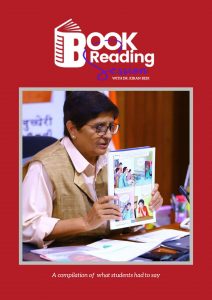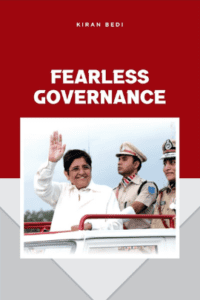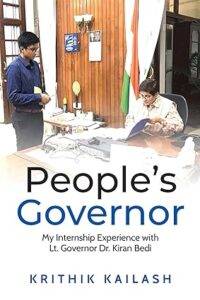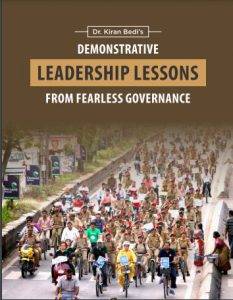
A 10-Point Action Plan for an Inclusive and Developed India
India is at a pivotal moment in its journey of development. The surge of purposeful leadership, citizen participation, and grassroots innovation has reignited hope for a truly inclusive and progressive nation. My recent experience at the National Conference on Women Leadership Moonshot: Shaping the Future, organized by the Sankala Foundation, reinforced this optimism.
Over the course of the day, I was not just a speaker — I was an attentive learner. The conference brought together extraordinary minds, bold ideas, and lived experiences that reflect the kind of leadership India needs: compassionate, grounded, and action-oriented.
Inspired by these deliberations and years of hands-on experience, I felt compelled to outline a 10-point action plan — practical steps that can help shape a Viksit Bharat, a developed India that works for everyone.
1. Make Bureaucracy Visible and Accessible
We often see our politicians engaging directly with citizens. But our bureaucrats — the critical machinery of governance — usually remain behind desks. I propose a simple shift: let every senior officer begin their day in the field. Whether it’s inspecting a school, hospital, or road project, this daily ground-level engagement fosters public trust, responsiveness, and deeper understanding of local needs.
2. Take Gati Shakti to the States
The central government’s Gati Shakti model — aimed at seamless inter-departmental collaboration — has shown measurable success. But why stop there? States too can adopt this approach. Regular coordination meetings led by Chief Secretaries can eliminate bureaucratic silos, ensure efficient project execution, and save valuable time and resources.
3. Empower Rural Women Through Mobility
Many elected women representatives in rural areas lack basic mobility and rely on others for transport. Providing them with electric scooters is a budget-friendly, transformative solution. It enables them to participate actively in governance, attend meetings, and oversee local initiatives with independence and dignity.
4. Strengthen Women’s Safety with Beat Policing
Women’s safety is central to their freedom. A robust police beat system — where each locality is assigned a dedicated officer known to the community — can prevent domestic abuse, substance-related violence, and other issues. This fosters a culture of trust between citizens and law enforcement.
5. Build a Credible Care Industry
Today, every working woman indirectly creates a job — hiring another woman for childcare, elder care, or household support. Yet this informal care economy lacks recognition. Let’s formalize it through certified training, skilling, and startups. This would not only create jobs but offer dignified, secure employment to millions.
6. Transform Schools into Day Schools
Our school systems still function on outdated schedules. Working parents — especially mothers — face immense stress managing after-school hours. Schools should evolve into holistic day institutions with childcare, homework support, and extracurriculars. Integrating anganwadis and creches within campuses can optimize infrastructure and reduce parental burden.
7. Design Homes for Joint Family Living
As families shrink due to space constraints, elders often get left behind. Let’s encourage multi-generational living by designing housing with separate rooms for parents — just like we do for home offices. This isn’t just about tradition; it’s about building social and emotional security into our homes.
8. Promote Choice-Based Post-Marriage Residence
Why should a working woman be expected to leave her support system post-marriage? Sometimes, her parental home offers the ecosystem she needs — especially when juggling careers in demanding fields like healthcare or law enforcement. The couple should have the freedom to choose where to live, based on support and mutual understanding — not patriarchy.
9. Upskill and Support Rural Women Entrepreneurs
In rural India, I’ve seen women transform their lives with minimal resources — a sewing machine, a small shop, or a skill. But beyond training, they need consistent handholding. Panchayats and NGOs must create frameworks for ongoing mentorship, helping women scale their businesses and sustain livelihoods.
10. Balance Rights with Responsibilities
Lastly, I propose evolving our Human Rights Commission into the Human Rights and Responsibilities Commission. Rights come with responsibilities — as citizens, as leaders, and as members of civil society. If we want a just and developed India, we must cultivate not only entitlements but also a deep sense of duty.
Final Thoughts
I didn’t just attend the conference. I invested my time — and left richer in perspective, hope, and commitment.
The truth is, India doesn’t lack ideas. What we need is implementation. We need visibility, leadership, and above all, collective will. Every citizen matters. Every initiative counts. And every woman who rises lifts a community with her.
Let us walk this journey together — responsibly, relentlessly, and united in purpose.
Jai Hind.











